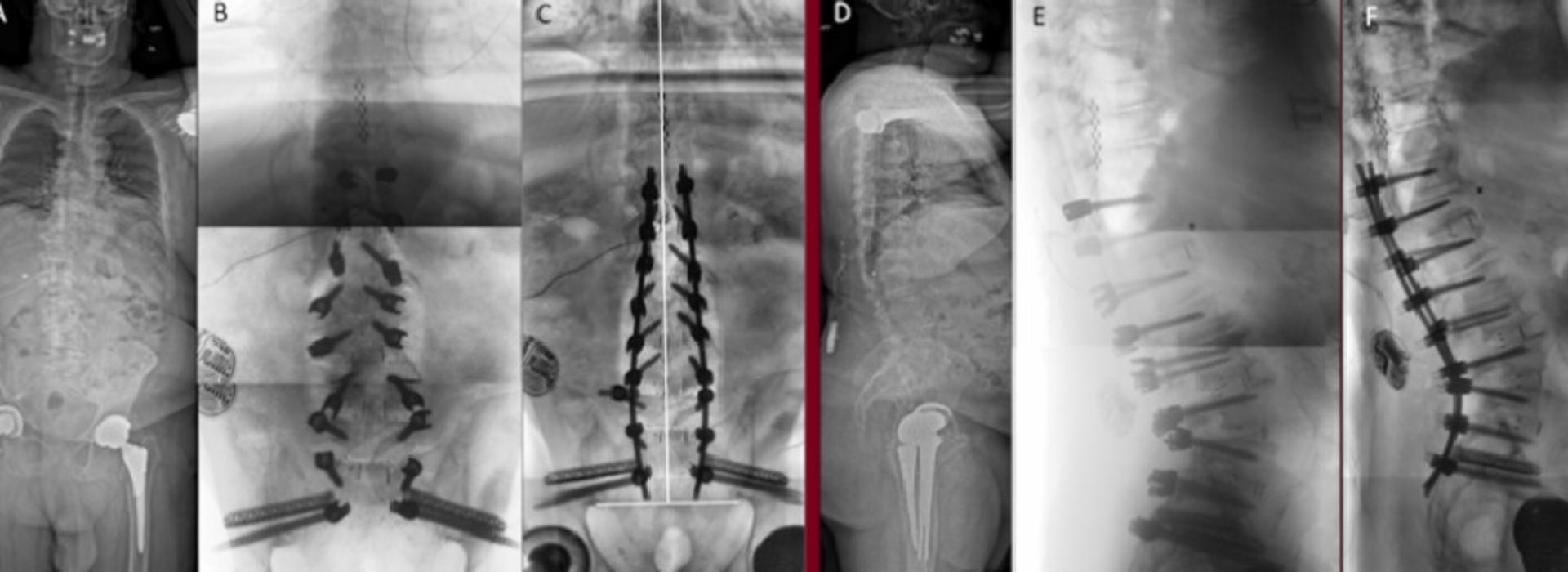
Medical School Research Team is First in the World to Use 2D Long Film Imaging
Before, during and after spine surgery, surgeons rely on clear, quality imaging to place implants in the ideal location and assess the outcome. These surgeons are also concerned with the spine’s alignment before and after the procedure, which requires a long X-ray image capturing the entire area. Typically, they use a portable imaging machine called an O-arm, however they can’t capture the entire spine in one image. Instead, they have to piece together multiple spot images to get an idea of what the whole spine looks like, which comes with workflow and image quality challenges.
The World Neurosurgery article, “2D Long Film O-arm imaging, an alternative when intraoperative fluoroscopy is inadequate,” co-authored by fifth-year resident Bryan Ladd, MD, and Assistant Professor Kristen Jones, MD, both in the Department of Neurosurgery, and David Polly Jr., MD, professor in the Department of Orthopedic Surgery, explores a new functionality for Medtronic’s O-arm that allows physicians to take clear, low-radiation long images and improves accuracy.
“Instead of stitching together multiple spot images, the tool can take a continuous X-ray, which has given us better intraoperative imaging to assess the accuracy of what we’ve done,” Dr. Polly said.
Their paper found that the new technology offers better quality and clarity, in addition to the novel ability to capture long X-ray images. Research from Medtronic also found that it reduces exposure to radiation. Dr. Polly and his team have been collaborating with Medtronic in the discussion, development and testing of the O-arm from its inception.
“Because of that partnership, we were the first in the world to use the technology that’s a part of the O-arm,” Dr. Polly said.
In addition to taking long images, the O-arm is used to place screws in the pedicles (a piece of bone that connects the front and back of the vertebrae and protects the spinal cord) during a spinal fusion. On average, pedicles are less than one centimeter wide, and if screws aren’t situated ideally, they can hit nerve roots or arteries, which requires extreme precision.
In patients with scoliosis, it’s particularly important to balance the shoulders level with the pelvis, which can be a challenge. When checking final spinal alignment in the past, the quality of images was poor in obese patients and in the cervicothoracic junction, regardless of which tool was used.
“2D Long Film imaging addresses these challenges and is a big improvement over existing intraoperative imaging technologies,” Dr. Ladd said.
When surgeons operate on the thoracic spine, it’s particularly difficult to determine vertebrae level, according to Dr. Polly.
“While we don’t have a study to prove it yet, the technology has helped us count more consistently in comparison with other techniques or technologies,” Dr. Polly explained. “We’re hopeful that it will help surgeons be more accurate in their ability to gauge level.”
Now, Dr. Polly and his team have done more than 40 cases using the 2D Long Film functionality of the O-arm. His patients at the M Health Fairview University of Minnesota Medical Center are positively impacted by the reduced exposure to radiation and more accurate planning and assessment of surgery.
“I think if you can more accurately place implants and assess results, you can achieve optimal outcomes,” Dr. Polly said. “I’m proud we’re able to provide that to our patients.”